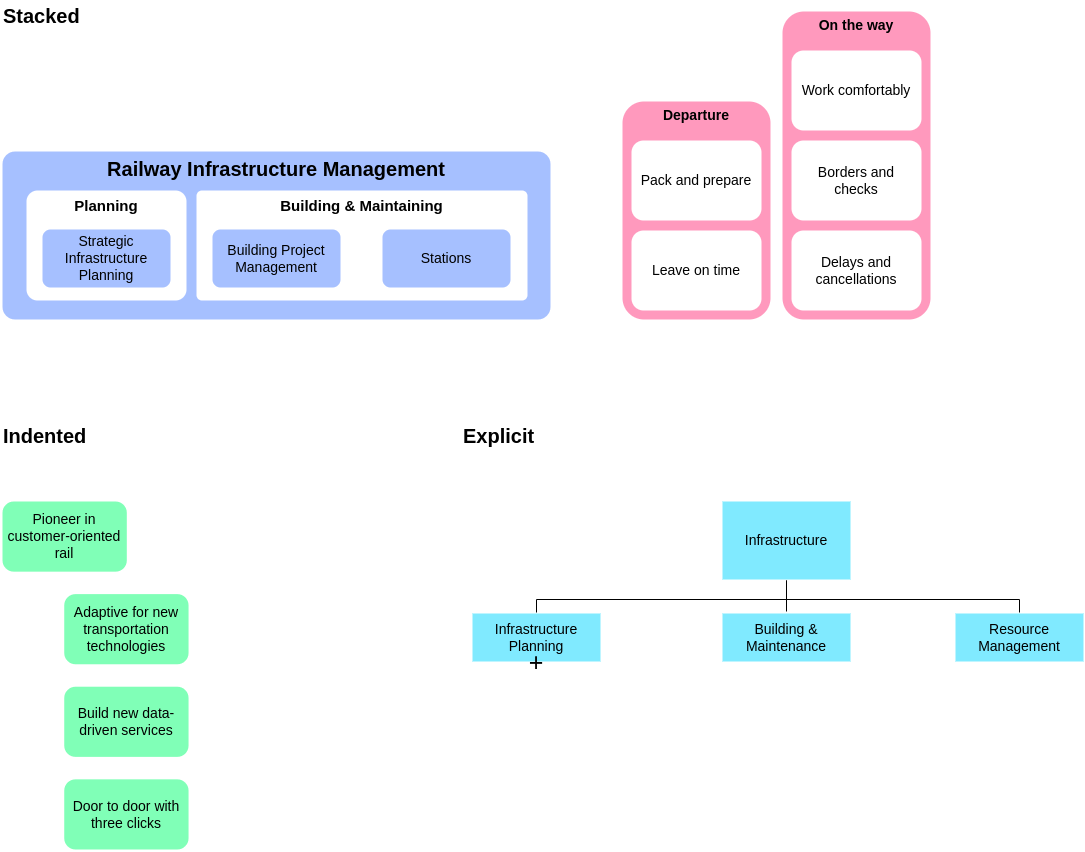(Created page with "=Tree= '''An element is part of another element of the same type.''' A tree represents a hierarchical whole/part relationship between elements of the same type. Hierarchical relationships are based on degrees or levels of superordination and subordination, where the superordinate element represents a whole, and subordinate elements refer to its members or parts. ==Examples== *An organisation is structured as a tree of departments, teams and roles. *A capability decomp...") |
No edit summary |
||
| Line 1: | Line 1: | ||
<small>[[Enterprise Elements]] | [[Relationships]]</small> | |||
=Tree= | =Tree= | ||
<span class="Def">An element is part of another element of the same type.</span> | |||
A tree represents a hierarchical whole/part relationship between elements of the same type. Hierarchical relationships are based on degrees or levels of superordination and subordination, where the superordinate element represents a whole and subordinate elements represent its members or parts. | |||
==Notation== | |||
[[File:EDGY-Tree-Relationship.png|EDGY Tree Relationship / Hierarchical Maps]] | |||
==Examples== | ==Examples== | ||
*An organisation is structured as a tree of departments, teams and roles. | *An [[organisation]] is structured as a tree of departments, teams and roles. | ||
*A capability decomposition is structured as a tree of sub-capabilities. | *A [[capability]] decomposition is structured as a tree of sub-capabilities. | ||
*A product portfolio is structured as a tree of categories, products and components. | *A [[product]] portfolio is structured as a tree of categories, products and components. | ||
*A brand portfolio is structured as a tree of corporate, product and special edition brands. | *A [[brand]] portfolio is structured as a tree of corporate, product and special edition brands. | ||
*A purpose and goal portfolio is structured as a tree of strategic, tactical and operational outcomes. | *A [purpose]] and goal portfolio is structured as a tree of strategic, tactical and operational outcomes. | ||
==Use== | ==Use== | ||
*Decompose an element into its smaller sub-elements. | *Decompose an element into its smaller sub-elements. | ||
*Express that a sub-element is a part of its superior element. | *Express that a sub-element is a part of its superior element. | ||
Revision as of 17:38, 22 March 2023
Enterprise Elements | Relationships
Tree
An element is part of another element of the same type.
A tree represents a hierarchical whole/part relationship between elements of the same type. Hierarchical relationships are based on degrees or levels of superordination and subordination, where the superordinate element represents a whole and subordinate elements represent its members or parts.
Notation
Examples
- An organisation is structured as a tree of departments, teams and roles.
- A capability decomposition is structured as a tree of sub-capabilities.
- A product portfolio is structured as a tree of categories, products and components.
- A brand portfolio is structured as a tree of corporate, product and special edition brands.
- A [purpose]] and goal portfolio is structured as a tree of strategic, tactical and operational outcomes.
Use
- Decompose an element into its smaller sub-elements.
- Express that a sub-element is a part of its superior element.
